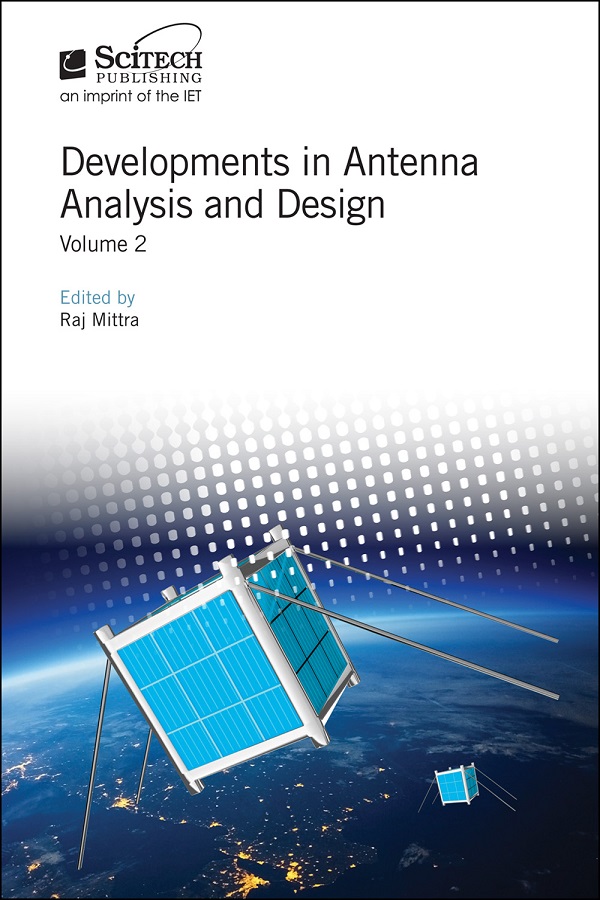- Agricultural Engineering and Technology
- Applied Physics
- Built Environment
- Computing and Networks
- Control, Robotics and Sensors
- Electrical Regulations
- Electromagnetics and Radar
- Energy Engineering
- Healthcare Technologies
- History and Management of Technology
- IET Codes and Guidance
- Manufacturing
- Materials, Circuits and Devices
- Model Forms
- Security
- Telecommunications
- Transportation

Developments in Antenna Analysis and Design
Volume 2
Edited by Raj Mittra
Developments in Antenna Analysis and Design presents recent developments in antenna design and modeling techniques for a wide variety of applications, chosen because they are contemporary in nature, have been receiving considerable attention in recent years, and are crucial for future developments. It includes topics such as body-worn antennas, that play an important role as sensors for Internet of Things (IoT), and millimeter wave antennas that are vitally important for 5G devices. It also covers a wide frequency range that includes terahertz and optical frequencies. Additionally, it discusses topics such as theoretical bounds of antennas and aspects of statistical analysis that are not readily found in the existing literature.
This second volume covers the topics of: graphene-based antennas; millimeter-wave antennas; terahertz antennas; optical antennas; fundamental bounds of antennas; fast and numerically efficient techniques for analyzing antennas; statistical analysis of antennas; ultra-wideband arrays; reflectarrays; and antennas for small satellites, viz., CubeSats.
The first volume covers the theory of characteristic modes (TCM) and characteristic bases; wideband antenna element designs; MIMO antennas; antennas for wireless communication; reconfigurable antennas employing microfluidics; flexible and body-worn antennas; and antennas using meta–atoms and artificially-engineered materials, or metamaterials (MTMs).
The two volumes represent a unique combination of topics pertaining to antenna design and analysis, not found elsewhere. It is essential reading for the antenna community including designers, students, researchers, faculty engaged in teaching and research of antennas, and the users as well as decision makers.
About the Editors
Raj Mittra is a Life Fellow of the IEEE, a Past-President of AP-S, and has served as the Editor of Transactions of the Antennas and Propagation Society. He won the Guggenheim Fellowship Award in 1965, the IEEE Centennial Medal in 1984, the IEEE Millennium medal in 2000, the IEEE/AP-S Distinguished Achievement Award in 2002, the AP-S Chen-To Tai Distinguished Educator Award in 2004 and the IEEE Electromagnetics Award in 2006. He has published over 970 journal and symposium papers and more than 40 books or book chapters on various topics related to electromagnetics, antennas, microwaves and electronic packaging. He also has three patents on communication antennas to his credit.
Publication Year: 2018
Pages: 426
ISBN-13: 978-1-78561-890-1
Format: HBK
Editors: Raj Mittra
